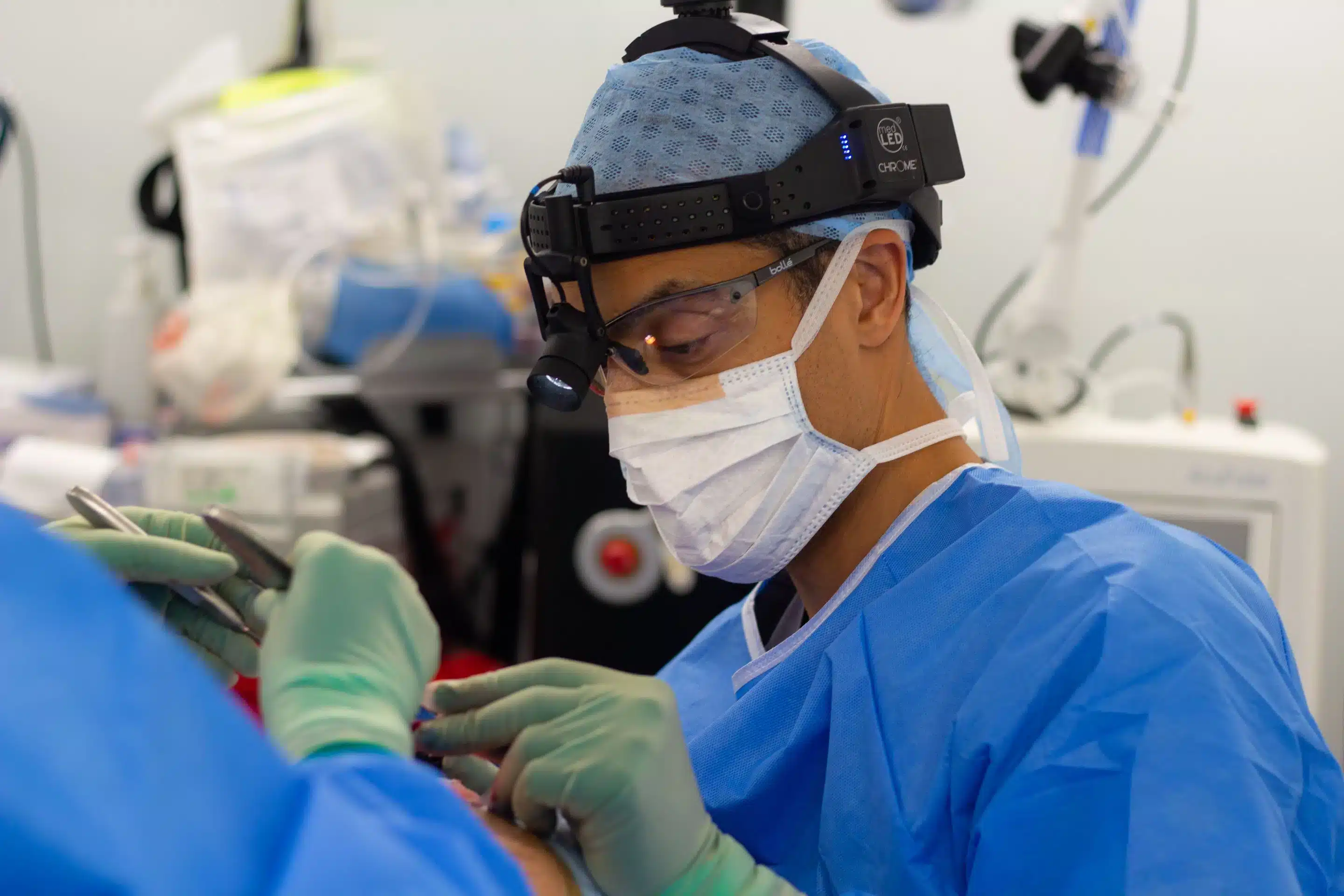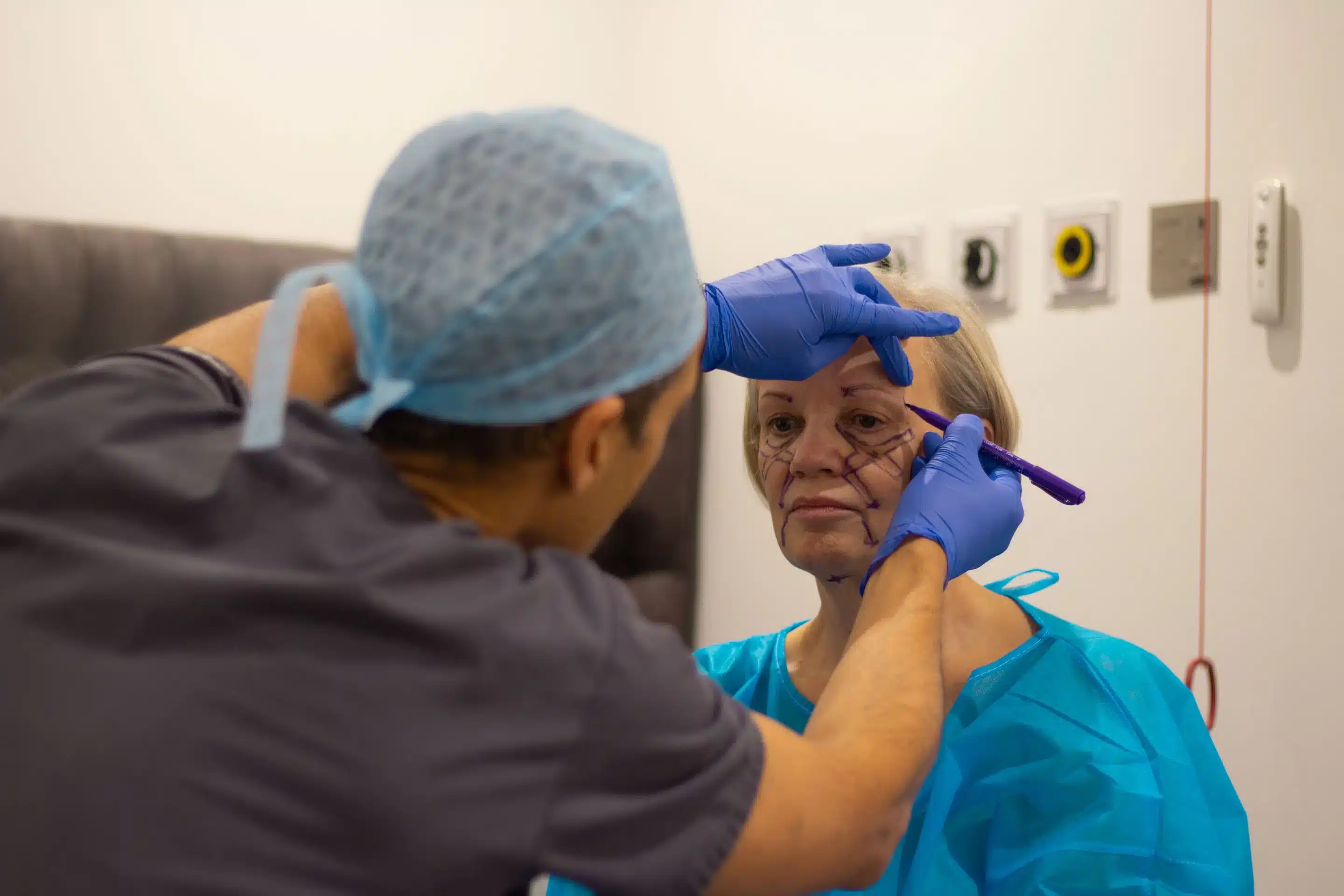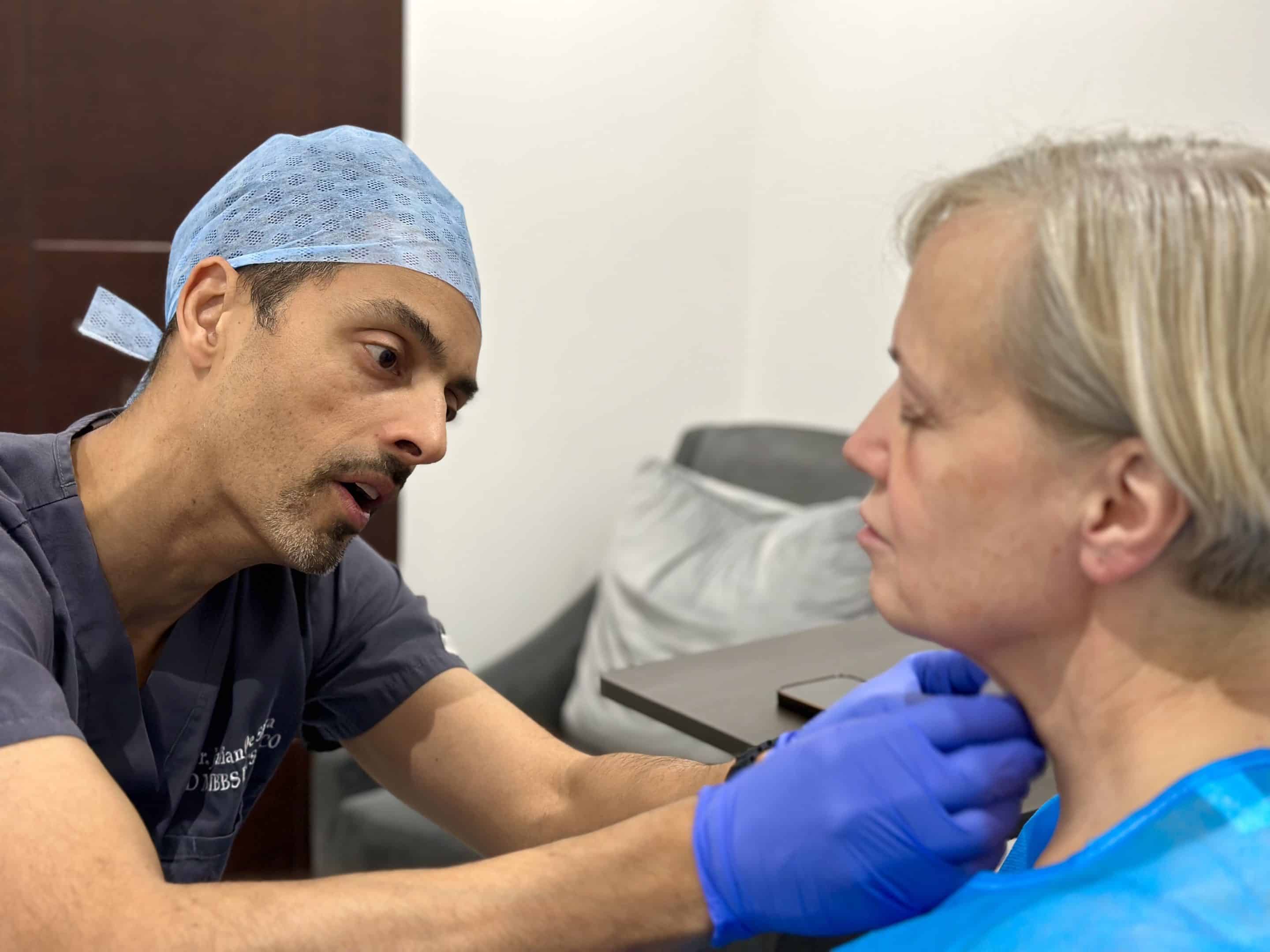Understanding Facial Ageing
Ageing is a natural process that affects everyone differently, but there are certain changes we all experience. Understanding these changes is essential in determining whether a facelift is right for you.
Gravity’s Effect on the Face
As we age, gravity takes its toll on our skin and facial tissues. Over time, the underlying structures such as muscles, fat pads, and connective tissues lose strength and elasticity, leading them to sag. This results in visible signs such as drooping cheeks, a less defined jawline, and sagging neck skin—commonly referred to as a “turkey neck.” The degree to which gravity affects your face depends on factors such as genetics, lifestyle, and sun exposure.
The areas most impacted by gravity include:
- Sagging Cheeks: As facial fat pads shift downward, the cheeks lose volume, creating a tired, hollow appearance.
- Jowls: Skin around the jawline begins to loosen, leading to jowls and the loss of a sharp jawline.
- Neck Sagging: The neck is often one of the first areas to show signs of ageing, with loose skin causing a double chin or “turkey neck” effect.

Loss of Volume in the Face
Another major factor in facial ageing is the loss of volume, particularly in the form of fat. Over time, fat pads shrink, creating a sunken or hollow appearance. This loss of volume can be more pronounced in some people due to lifestyle and environmental factors.
Key causes of volume loss include:
- Fat Resorption: The fat pads in the face begin to shrink and shift downward, especially around the eyes, cheeks, and temples.
- Bone Resorption: As facial bones lose density, the face can appear more hollow, contributing to sagging skin.
- Muscle Changes: Muscles under the skin lose tone, further contributing to skin sagging.
Lifestyle choices such as excessive sun exposure, smoking, or intense cardio can accelerate volume loss, leading to a gaunt or aged look. The areas most affected by volume loss include:
- Cheeks: The cheeks may appear flat or hollow as fat pads shrink.
- Temples: As volume decreases in the temples, the face may take on a more angular, older appearance.
- Under the Eyes: Volume loss can create dark circles and puffiness under the eyes.
- Jawline and Chin: Reduced volume can lead to sagging and the formation of jowls.
Skin Laxity
As we age, our skin loses its elasticity, a condition known as skin laxity. This happens due to a decline in collagen and elastin fibres, which are responsible for the skin’s firmness and ability to bounce back. Sun exposure and gravity further accelerate skin laxity.
The areas most affected by skin laxity include:
- Jowls: Sagging skin around the jawline creates jowls, making the face appear older.
- Neck: The skin on the neck is particularly vulnerable to laxity, contributing to “turkey neck.”
- Cheeks: As skin loses elasticity, the cheeks may appear flatter and sag, leading to the formation of nasolabial folds.
- Under the Eyes: Skin laxity here can cause puffiness and dark circles, creating a tired appearance.

What is a Facelift?
A facelift is a surgical procedure designed to lift and tighten facial tissues, rejuvenating the face by addressing gravity, volume loss, and skin laxity. The goal is to restore a youthful appearance by correcting these age-related changes, leaving you looking refreshed and naturally rejuvenated.
A successful facelift can turn back the clock, giving you a more sculpted and youthful look. The best results leave patients looking rejuvenated, not dramatically altered, so your friends and family will simply notice that you look more refreshed.

What You Need to Know About Facelift Recovery
Recovery is a crucial phase of your facelift journey, and understanding what to expect can make the process smoother and more reassuring. There are two key aspects of recovery: physical healing and emotional adjustment.
Physical Recovery
In the first few days after surgery, it’s normal to experience swelling and bruising. These effects will gradually diminish over time, and following your surgeon’s post-operative care instructions is essential for optimal results. Your surgeon may suggest specific treatments or medications to help reduce swelling and promote faster healing. Understanding the recovery timeline can help you set realistic expectations and stay on track.
Emotional Recovery
The emotional aspect of recovery can be just as significant as the physical one. It’s normal to feel a range of emotions during this time, especially since the initial swelling may temporarily obscure your final results. Patience is key—your new appearance will become more apparent as the swelling subsides. Give yourself time to adjust, and remember that healing is a gradual process.
By being informed and prepared, you can approach your recovery with confidence and a positive outlook.

What Age is the Right Time for a Facelift?
There isn’t a definitive age for undergoing a facelift—it truly depends on when you start noticing that ageing has significantly impacted your appearance. While many patients decide to have a facelift in their 40s to 60s, when concerns like gravity, volume loss, and skin laxity become more noticeable, I’ve also worked with patients in their 30s who experienced more pronounced signs of ageing earlier than expected. This highlights that the decision to undergo a facelift is deeply personal and varies from person to person.
The procedure is most effective when the skin retains some natural elasticity, which is why patients in their 40s and early 50s often achieve the most dramatic and long-lasting results compared to more elderly patients. However, younger patients in their 30s who are dealing with more significant signs of ageing, such as deep folds or sagging skin, can also benefit greatly. The key is to assess your individual facial structure, the extent of ageing, and the results you wish to achieve.
Ultimately, the “right” time for a facelift isn’t about hitting a specific age—it’s about recognising when you’re ready to address the changes in your appearance and take a step towards restoring a more youthful and refreshed look. A personalised consultation is the best way to determine if a facelift is the right option for you based on your unique needs and goals.

How the Facelift Checklist Can Help
Are you ready for a facelift? The Facelift Checklist is a helpful tool designed to guide potential patients through the decision-making process. This checklist will help you assess your readiness, ensure you understand the procedure, and prepare for the best possible outcome. In just five minutes, you’ll have valuable feedback to help you make an informed choice.
Deciding to undergo a facelift is a significant decision, and being well-informed is key to ensuring a successful and satisfying result. Understanding how age affects the face, the benefits of a facelift, and the recovery process will help you feel confident in your decision. The Facelift Checklist is a great tool to assess your readiness and guide you through the steps to prepare for a smoother, more successful experience. With the right preparation and expert care, a facelift can rejuvenate your appearance, boosting both your confidence and your sense of well-being.
If you’re considering a facelift and would like personalised advice or want to discuss your options in more detail, schedule a consultation with Dr De Silva. Dr De Silva will guide you through the process, answer your questions, and ensure you feel fully informed every step of the way. Contact us today to take the first step towards a refreshed, youthful you.
BOOK A CONSULTATION




